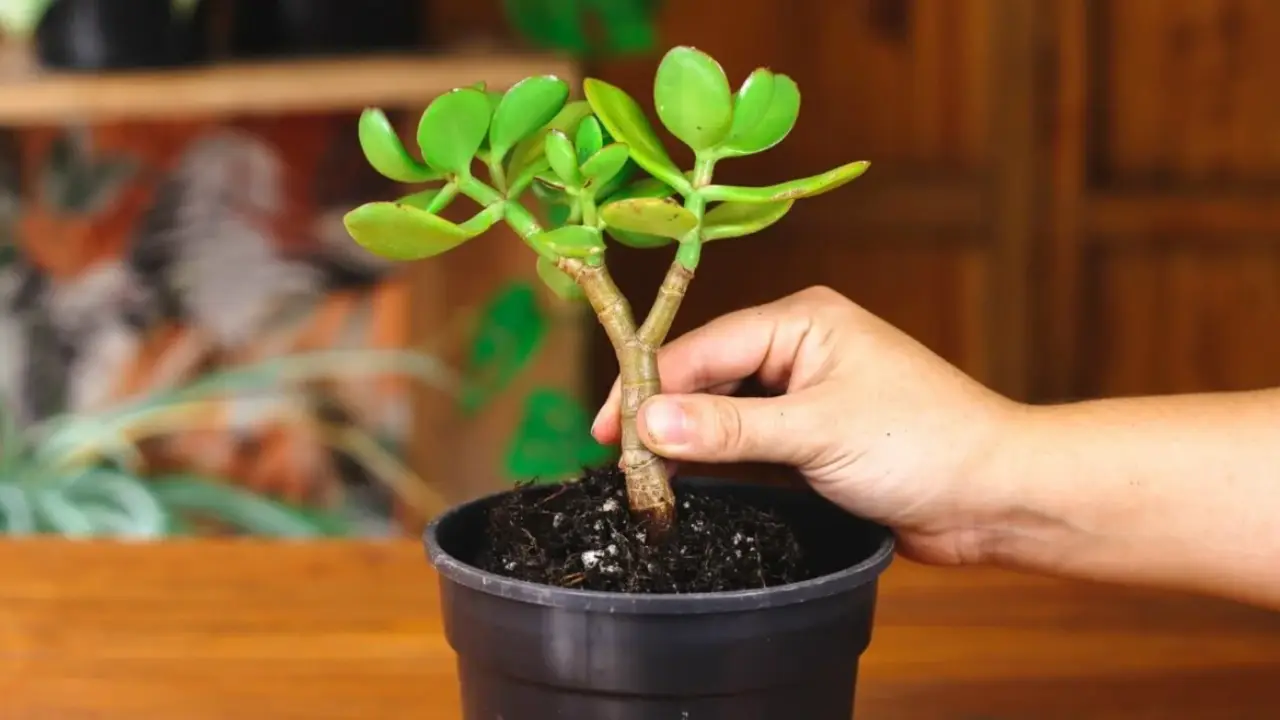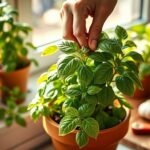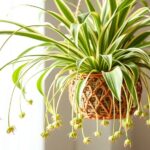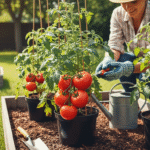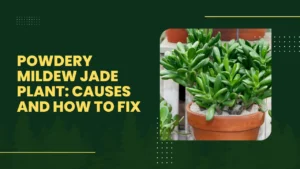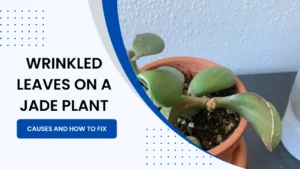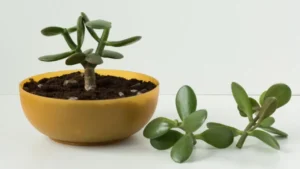As people who enjoy gardening, you must have heard about jade plants. A plant with over 1400 varieties to choose from, jade is a blessing for everyone who has a garden, or greens in their home.
These plants offer a great deal to choose from. Big or small, indoor or outdoor, flowering or non-flowering, they have everything you think you might want in your place.
But something we need to talk about in the following passages is how one deals with potting and repotting the plant. Here is everything you need to know.
Table of Contents
About the Jade Plant?
The jade plant is a popular succulent houseplant with fleshy, oval-shaped leaves and thick, woody stems that resemble tiny tree trunks. With just a bit of care, it can grow anywhere between 3 and 6 feet tall, but it does so slowly, adding only about 2 inches a year.
This small beauty, with its round leaves and a smooth unique texture, is known to bring luck and symbolizes growth, prosperity, wealth, and positive energy. Also if you are having a little tiff with your friends, the Jade Plant might help in the flourishing of your friendship.
You do not need to be lucky to know how to properly care for a healthy jade plant because it is fairly easy.
Potting a Jade Plant
Before we go on and discuss repotting a plant, we must know how to deal with potting it in the first place. You can do this in 2 possible ways. You can buy a plant from a nursery or start one from leaf/stem cuttings. Let us talk about these in detail.
Planting a Jade
You can grow a jade plant by buying one from a nursery but remember that this is not as easy as it sounds. Here is what you need to pay attention to about planting a seedling.
1. Choosing the right pot: Make sure that you get a wide and sturdy pot. It should be moderately deep as jade plants tend to grow top-heavy and fall over.
You need to make sure the base is strong because the pot is going to be home to the plant for a long time. Try to use a clay or terracotta pot to help absorb excess moisture.
2. The correct soil mix: For your jade to be healthy, use a soil mix that will drain thoroughly, as excessive moisture might lead to fungal diseases like root rot.
Ideally, the soil that houses your jade should have a neutral to slightly acidic pH level. If your local nursery is out of a succulent-specific blend, you can use an all-purpose blend by adding some perlite to the mix.
3. Watering the plant: After the plant has been placed in the pot, don’t water the plant at that very moment. Waiting anywhere from several days to a week before watering lets the roots settle and recover from any damage.
Starting a Jade from a Leaf or Stem Cutting
Although starting your plant might sound like a hard job, it isn’t as tough as it seems. As succulent, jade plants are very easy to grow from a Leaf or Stem Cutting.
Let us talk about it in detail:
1. Where do we start? Start by removing a leaf or a stem cutting from a well-established plant. An ideal stem cutting to start your jade with would be 2–3 inches in length and have at least two pairs of leaves.
Once you have your leaf or cutting, allow it to sit for a few days in a warm place. It helps in the formation of a callous will form over the cut area, helping to prevent rot and encourage rooting.
2. Get your pot ready: Get an ideal-sized pot, made out of clay or terracotta preferably to plant your cutting. Use a well-drained soil mix but make sure it is not entirely wet, only slightly moist.
3. The part where you pot: Take the leaf you got and lay it on top of the soil horizontally, covering the cut end with some of the soil so that it can grow a root. If you have a stem cutting, place it upright in the soil, you can even use toothpicks for support.
4. Watering and rooting: Place the newly potted stem/leaf in a pot, and place it in a warm place with sufficient indirect sunlight. Do not water it just yet! After a week or two, the cutting/leaf will start growing little roots.
About a week from then, give the plant a gentle poke or tug to see if it has rooted itself in place. If it hasn’t, wait a little bit longer, testing it every few days, just don’t pull too hard.
5. What next? Once it seems that the plant is firmly rooted, water it deeply and carefully. Use something like a turkey baster to gently water the plant without bothering the roots.
Make sure that you don’t just get the surface wet, as you want to encourage the roots to grow downward to get the water, not towards the surface.
Repotting a Jade Plant
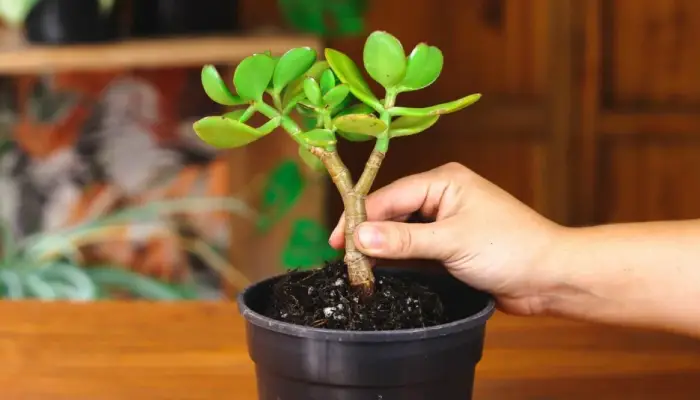
Like a lot of other plants that start in small containers, jade also needs repotting because they outgrow their pots when they grow healthily. They are good growers, but over time, these tiny tots, with their thick woody stems, can outgrow their pots and need repotting.
When should one Repot their plant?
A common misconception about repotting is that your plant needs to be in a bigger container when it seems to be overcrowding the pot. The truth is it isn’t exactly bad for the plant although it does limit the growth of your plant. Jade plants, in this case, grow to the size their root system allows, often reaching three feet.
According to gardening professionals, small jade plants should be repotted every 2 to 3 years whereas the larger ones need to be shifted to bigger containers every 4 to 5 years.
And as is understood, the root here needs space to grow, hence with every repotting, the plant needs to be shifted to a bigger container. One size bigger than the last usually works well with most varieties.
The Right Soil Mix for your Jade Plant
Jade Plants are succulents, so a mix that is well-drained and aerated is necessary. The roots need the right amount of oxygen to breathe and be healthy. You would want the water to flow out freely so that the soil and roots don’t stay too wet.
The leaves and stems of Jades store water so the mix needs to dry out in between waterings otherwise the plant might end up overwatered and prone to fungal infections.
The soil you plant your jade in is where it establishes its roots and you need to be extremely particular about what you grow your plant in. In the case of a jade plant, a succulent-specific blend is your best bet.
Ideally, the soil that houses your jade should have a neutral to slightly acidic pH level, and you should drain it well to prevent excessive moisture from accumulating and causing fungal growth in your plant.
If your local nursery is out of a succulent-specific blend, you can use an all-purpose blend by adding some perlite to the mix. This will make the blend more succulent and specific for your jade.
What Kind of Pot to Use?
You need to move up only 1 pot size, or about half an inch around the root ball, at any one time. Jade Plants tend to prefer to feel a little crowded instead of being put into an oversized pot that wouldn’t give a cozy fit.
This is a common trait shared among many succulents, cacti, and any other similar houseplants.
If your Jade Plant had been taken home in a 4-inch pot, move up to a 5-inch pot during the next repotting. This leaves ½ inch of space on either side of the diameter for growth. You should know that Jade Plants grow equally well in clay and plastic potting vessels.
Glazed pots and containers are recommended for the succulent since the material can hold just enough moisture for these plants.
How to Repot a Jade Plant?
When you think your jade is ready for a new container, you need to start by making sure the soil is dry. Start with fresh soil and a new, clean container that is larger than your jade’s last home.
You can commence the process by gently using a spade or any other suitable flat tool to slide around the inside edges of the container. This helps loosen the root system that may be clinging to the walls of your pot.
Depending on the size of your plant and container, you may resort to turning it upside down to let it slide out or pull gently by the stem at the soil area. Be careful when you do this or you might damage the roots of your plant.
If the plant has several stems, gently circle them with your thumb and fingers and flip the pot upside down. If roots seem stuck near the bottom, you can work them out with a clean tool.
If your plant has multiple branches, repotting might be a good time to divide it into two plants. Just remember that this is no compulsion, it is just an additional option you can exercise while you’ve got it out of the pot.
If you do choose to divide your jade plant, make one clean, quick cut with a sharp tool through the center of the root ball and you’ll have 2 green beauties to your name.
When you’ve gotten your plant out of the pot, tease out the roots to assess how much growth you can expect. Get rid of as much of the old soil as possible.
It is rarely necessary to trim the roots of a jade plant, but a slight trim never hurts the plant. Sometimes, it even encourages growth in the new container.
When repotting jade plants, place them as deeply as possible into the new container, but don’t let the leaves of the plant touch the soil. As jade plants grow, their stem tends to thicken and they start looking more like a tree. They tend to grow taller and put out new leaves when they are settled in their containers.
After the plant is in the other pot, wait for at least 2 weeks before you water your jade. Wait longer if the bottom leaves don’t crinkle. This allows any root damage that might have occurred in the transfer to heal and new growth to get started.
Aftercare of the Jade
Once you let the plant into its new pot, let your jade plant settle into the new soil mix for 7 days, and try to keep it dry before watering. Put the plant in a bright location where you can guarantee ample sunlight.
Jades, like most succulents we know of, are very easy to care for. Even watering isn’t very schedule-bond. Water the plant once a month in the warm months and every 2 months in the winter. Just remember that you need to water the plant as soon as you see any signs of water stress in your jade.
Watch out for any exposure to cold breezes and extra hot air as well during the first month after repotting. As was mentioned before, Jade plants love bright, sunny locations, and thrive and stay healthy in warm temperatures with high humidity.
Also, the plants are more susceptible to pests and diseases when they have just been shifted to new containers. Brown spots are the most common symptom of leave stress, so you need to watch out for the same.
Conclusion
With all the discussion that has taken place so far, we know everything there is to know about repotting a jade plant. Since jade plants are so common these days, it is important that we, as gardening enthusiasts, talk about how we can keep our beloved leafy friends healthy and help them thrive.
So now, you need not worry if you see that your plant is growing too big or going to end up dying because we figured out how easy it really is to repot the jade plant, you just need to keep in mind, the few quirks that come along the way.
FAQs
Q1. Should I soak my Jade Plant before repotting?
Since Jade Plants are succulents, they are sensitive to watering, so it’s best not to soak them during the repotting process. But if the plant is firmly stuck in a pot that’s too small, soaking may be the only option. Just make sure that you don’t water it right after repotting.
Q2. Should you water a Jade Plant immediately after repotting?
Even when you don’t soak the Jade Plant before the repotting process, it shouldn’t be watered for up to two weeks after repotting. You should avoid watering to prevent root rot.
Q3. Do Jade Plants respond well to big pots?
Jade Plants usually like their containers on the smaller side rather than the bigger ones. Pots should only be ½ to 1 inch bigger than the plant on either side when you are repotting your leafy friend or the plant will not accept it.
Q4. Why does the jade turn limp after repotting?
Stress and shock cause any sort of plant, let alone Jade Plants, to go limp after repotting, including early watering or use of a wet potting mix. If the leaves are wrinkled, it could be a sign that your plant needs water instead.
Q5. Should you fertilize your Jade Plant after repotting?
As a plant that appreciates only low nutrient levels, Jade Plants don’t enjoy fertilization right after repotting. Wait for at least 4 months after the change in the pot before adding any jade plant fertilizer and try not to feed the nutrients in the months leading up to repotting.
Q6. What is the best time to repot your jade plant?
Generally, for most plants, springtime is the best time for repotting your Jade plant. If you reside in a hot climate, though, you can go on to repot your jade any time of the year, during the spring, summer, or early autumn.
The only time of the year when you shouldn’t repot your jade is in the wintertime because this is the time when the plant is dormant, or in other words, resting.
Q7. How should I go on to repot my jade plant?
When your plants are young, they can bear the repotting every couple of years to encourage them to grow bigger and healthier. When your plant has matured completely, repot it every 4 to 5 years or as per the requirements of your jade.

